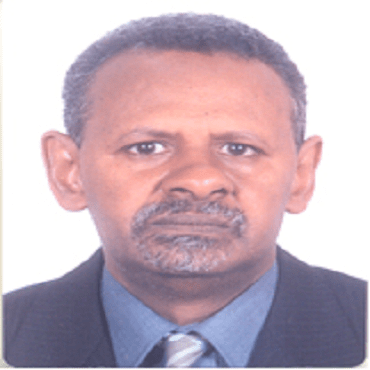Scientific Program

Abdeen Mustafa Omer
Energy Research Institute, Nottingham, United Kingdom
Title: Agricultural residues, sustainable development and environment
Biography:
Abdeen Mustafa Omer (BSc, MSc, PhD) is an Associate Researcher at Energy Research Institute (ERI). He obtained both his PhD degree in the Built Environment and Master of Philosophy degree in Renewable Energy Technologies from the University of Nottingham. He is qualified Mechanical Engineer with a proven track record within the water industry and renewable energy technologies. He has been graduated from University of El Menoufia, Egypt, BSc in Mechanical Engineering. His previous experience involved being a member of the research team at the National Council for Research/Energy Research Institute in Sudan and working director of research and development for National Water Equipment Manufacturing Co. Ltd., Sudan. He has been listed in the book WHO’S WHO in the World 2005, 2006, 2007 and 2010. He has published over 300 papers in peer-reviewed journals, 200 review articles, 15 books and 150 chapters in books.
Abstract
Sudan's climatic conditions (mainly the rainy seasons) enable double annual harvests (in July and November) in the southern parts of the country. Most of the agricultural activities are concentrated near the Nile River. The El Gezira irrigation system that is located between the White and the Blue Nile Rivers (both rivers merge to form the Nile River) is the most important agriculture project and, according to some statistics, is also the largest artificially irrigated region in the world. As the irrigation system has been put in place, sorghum, wheat, and groundnuts have been planted instead of cotton in an effort to make Sudan self-sufficient in foodstuffs. The agricultural sector is the most important economic sector in Sudan. It created 39 percent of the gross domestic production (GDP), employed about 80 percent of population, and contributed 80 percent of the country's exports in the late 1990s. Cotton is the main agriculture export item, although its export volumes have been decreasing recently. The lack of any marketing or developed market policy is evident. The government has suggested the end of export taxes in order to promote more agriculture products in the future. Other agricultural products include sesame seeds, sorghum, and gum Arabic. Animal husbandry represents a very important part of the national economy, as well. Its production increased during recent years as a result of better veterinary treatment, better credit policy, and higher prices in the market. Fishing is another important sector of the national economy. The average yearly production averages around 33,000 tons, from which sea fish represent about 1,500 tons. Perch is the most important fresh-water fish, which is caught mostly in the Nile River. About one-third of the total area of Africa's largest country is suitable for agricultural development. Abundant rainfall in the south permits both agriculture and grazing grounds for the large herds owned by nomadic tribes. In the north, along the banks of the Nile and other rivers, irrigation farming prevails. Of an estimated 16.9 million hectares (41.8 million acres) of arable landing 1998, about 1.9 million hectares (4.7 million acres) were irrigated. Principal cash crops are cotton, sesame, peanuts, sugarcane, dates, citrus fruits, mangoes, coffee, and tobacco; the principal subsistence crops are sorghum, millet, wheat, beans, cowpeas, pulses, corn, and barley. Cotton is the principal export crop and an integral part of the country's economy. In 2001, agricultural products accounted for 21.9% of imports and 19.2% of exports; there was an agricultural trade deficit of $24.5 million. Government regional development schemes have played a decisive part in the economy since the 1920s. The Gezira Scheme, located between the Blue and White Niles near their confluence at Khartoum, is the world's largest under a single management and provides a substantial portion of foreign exchange and government revenue. This storage irrigation project, which covers 840,000 hectares (more than two million acres) but has an additional potential of two million hectares (5 million acres), dates back to 1911 and was put into operation by a British firm. After the expiration of the firm's contract with the Sudanese government in 1950, the land was leased to tenant farmers, who numbered over 100,000 in 1987. They manage the scheme jointly with the government through the Gezira Board. In July 1980, construction began on the 354-km (220-mile) Jonglei Canal, intended to drain the Sudd swamp and channel water from the White Nile to the arid northern Sudan and to Egypt. Built by a French consortium at a projected cost of $260 million and scheduled for completion in 1985, the canal could irrigate up to 243,000 ha (600,000 acres) of Sudanese land. By 1984, however, the project had been halted by the Sudanese People’s Liberation Army (SPLA) opposition, with less than 100 km (62 mi) to be excavated. In 1992, the public and private agricultural sectors invested heavily in land preparations, pesticides, and related inputs. Agricultural funding for such projects comes from the World Bank, the African Development Bank, and the International Fund for Agricultural Development. However, completion of these projects has been complicated by debt-repayment problems. In spite of efforts to improve Sudan's agricultural resources, famine conditions have existed in southern Sudan since 1986. Inadequate rains, a poor distribution infrastructure, and civil war have hampered relief efforts. Among agricultural products in 1999 were sorghum, 3,045,000 tons; peanuts, 980,000 tons; sesame, 220,000 tons, (the third highest in the world after India and China); and wheat, 168,000 tons. Cotton fibre production in 1999 was 172,000 tons. Production in 1999 also included sugarcane, 5,950,000 tons; millet, 1,499,000 tons; cottonseed, 131,000 tons; tomatoes, 240,000 tons; dates, 176,000 tons; yams, 136,000 tons; and corn, 65,000 tons.
- Plastics Engineering - Current Innovations & Applications
- Composite Plastic Materials
- Polymer Chemistry
- Plastics in Packaging
- Plastics Revolutionized Healthcare
- Polymer Degradation and Stabilization
- Nano Material and Nanotechnology
- Processing & Analysis of Polymer Melt Flow
- Plastics & Rubber Innovative Materials
- Renewable Resources and Biopolymers
- Polymer Material Science and Engineering
- Polymer Industry Market & the Next Generation

